Chelicerates
|
The chelicerates include modern spiders, mites, scorpions and their relatives. Also included are the horseshoe crabs, which are not true crabs (which are in the Class Crustacea, below).
Modern horseshoe crabs have changed very little from their ancestors, such as this Mesolimulus waichi
Taxonomy: Subphylum Chelicerata; Class Merostomata; Order Xiphosura
Solnhofen Limestone, Germany
Late Jurassic, Kimmeridgian Stage
Black Hills Institute Museum, South Dakota
|
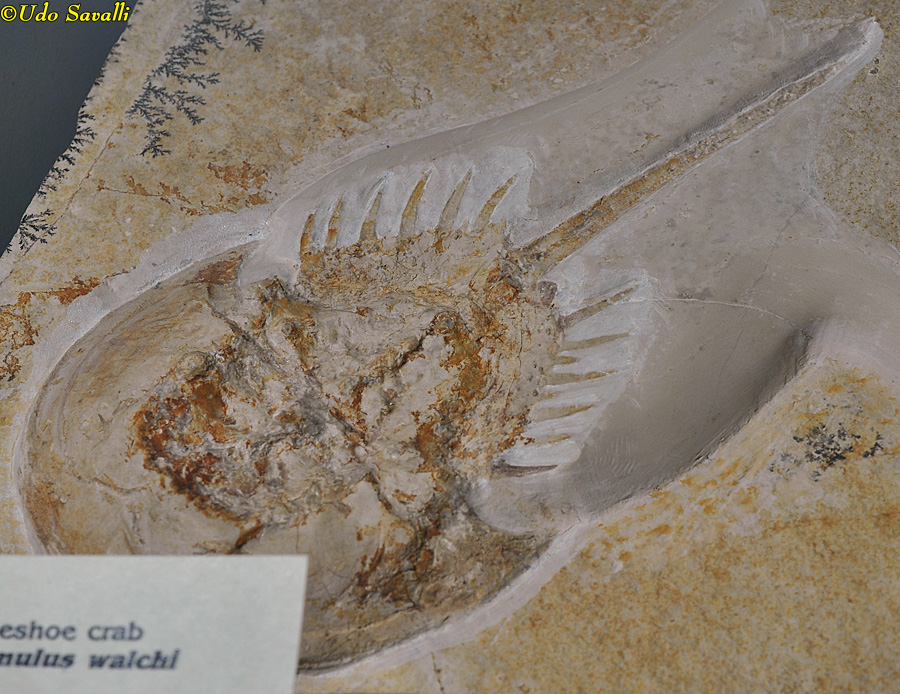
|
|
|
Another specimen of Mesolimulus waichi
Taxonomy: Subphylum Chelicerata; Class Merostomata; Order Xiphosura
Solnhofen Limestone, Germany
Late Jurassic, 150 Ma
Field Museum of Natural History, Chicago IL
|
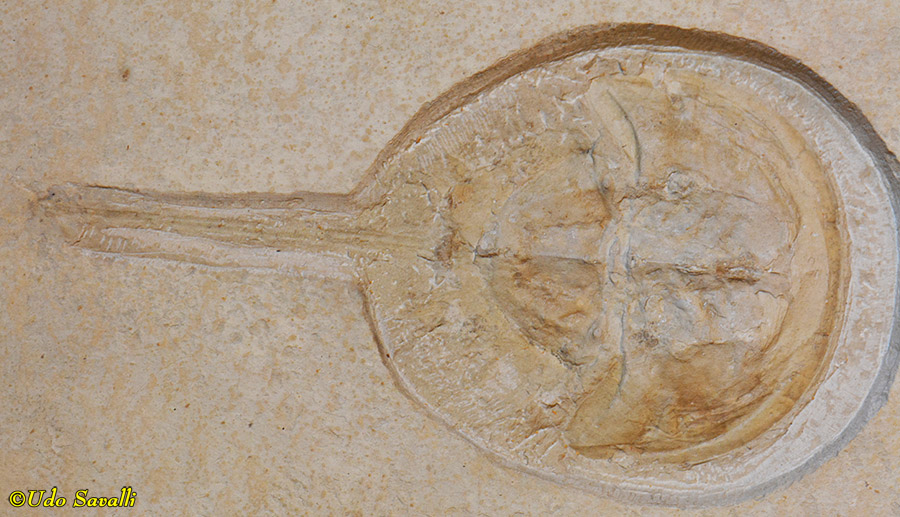
|
|
|
The horseshoe crab Tachypleus syriacus
Taxonomy: Subphylum Chelicerata; Class Merostomata; Order Xiphosura
Hjoula, Lebanon
Late Cretaceous, 110 Ma
Tuscon Gem & Mineral Show
|
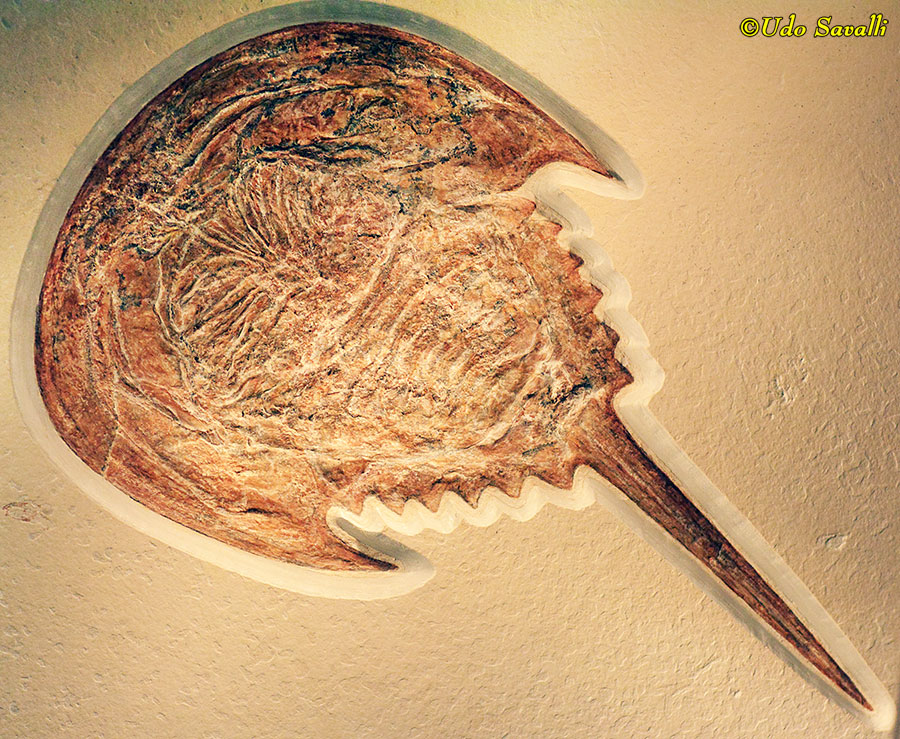
|
|
|
Sea scorpions, such as this Eurypterus lacustrus, are not true scorpions and may be related to horseshoe crabs. Their relatives may have been some of the first animals to walk on land.
Taxonomy: Subphylum Chelicerata; Order Eurypterida
Williamsville Limestone, Ontario
Silurian Period, Niagran Stage
Black Hills Institute Museum, South Dakota
|
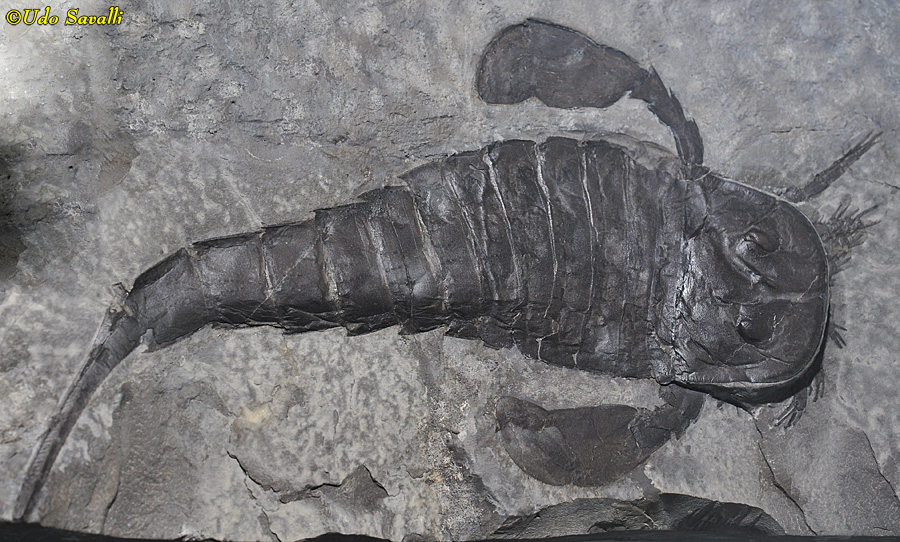
|
|
|
Sea scorpions, Eurypterus remipes, group.
Taxonomy: Subphylum Chelicerata; Order Eurypterida
Waterlime Formation, Herkimer, NY
Silurian Period
Black Hills Institute Museum, South Dakota
|
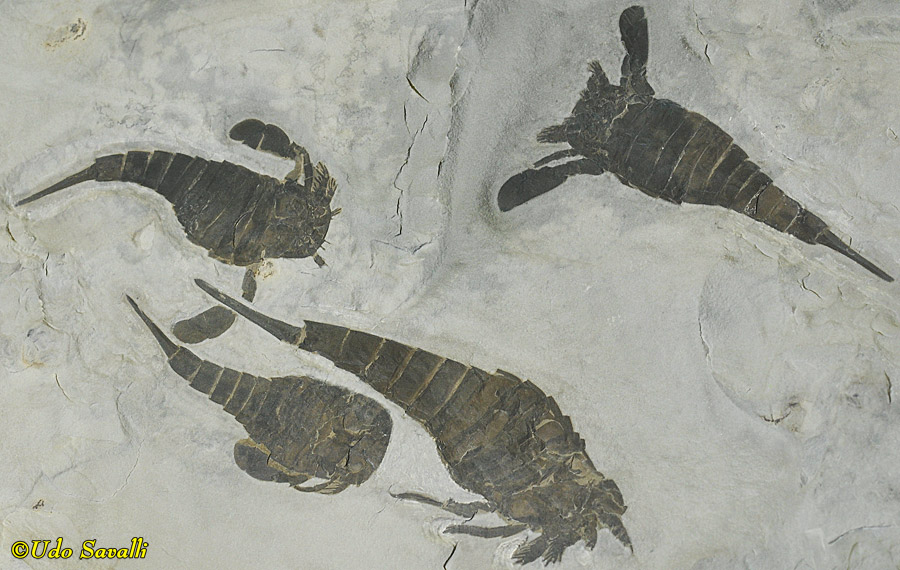
|
|
|
Some sea scorpions, such as this Pterygotus cobbi (cast), reached enormous size, to 1.7m long or more.
Taxonomy: Subphylum Chelicerata; Order Eurypterida
Bertie Waterlime Formation, Ilion, Herkimer Co., NY
Silurian Period
Black Hills Institute Museum, South Dakota
|

|
|
|
Sea scorpion, Eurypterus remipes, model.
Taxonomy: Subphylum Chelicerata; Order Eurypterida
Late Silurian Period
Museum of Ancient Life, UT
|
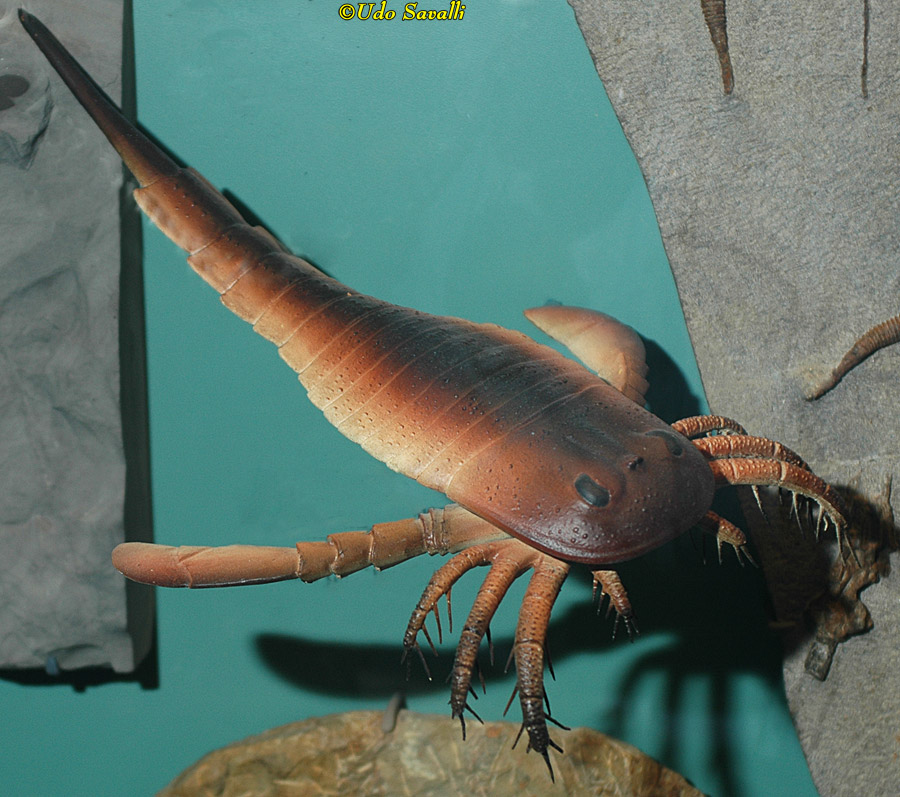
|
|
|
Pterygotid sea scorpion model (genus not specified).
Taxonomy: Subphylum Chelicerata; Order Eurypterida
Denver Museum of Science & Nature
|
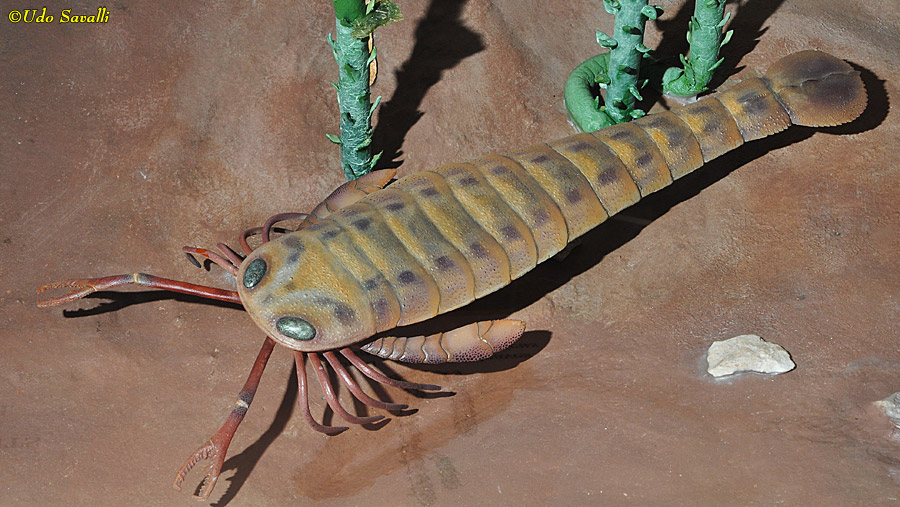
|
|
|
Marrellomorphs (lace crabs) are a group of extinct, early arthropods whose relationships are uncertain. They are noted for their distinct head shields with spines.
Marrella splendens is the most common species.
Taxonomy: Subphylum Chelicerata?; Class Marrellomorpha
Burgess Shale, British Columbia
Middle Cambrian Period, 508 Ma
Field Museum of Natural History, Chicago IL
|
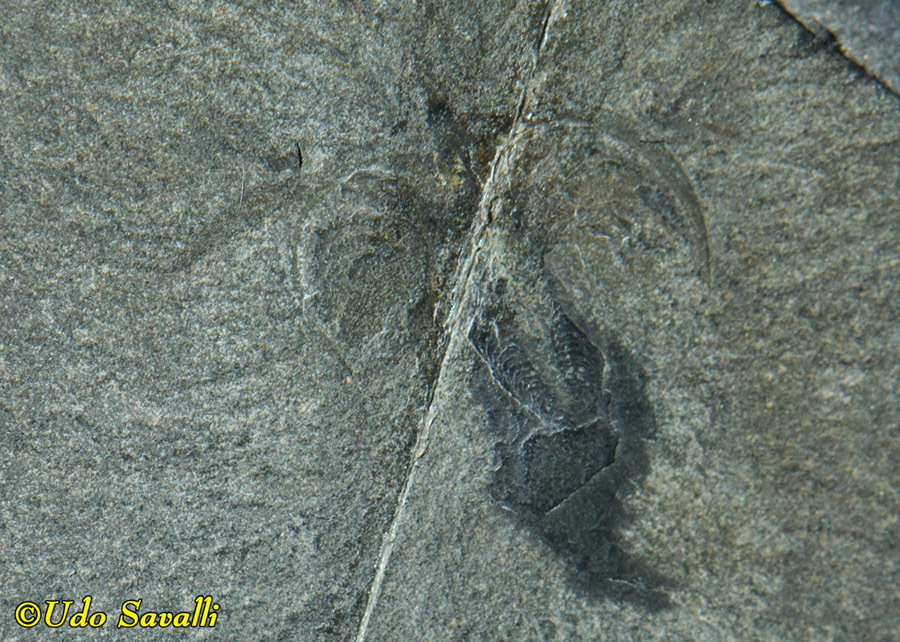
|
|
Arachnida — Spiders, scorpions, and relatives
|
Arachnids are familiar arthropods that include spiders, scorpions, ticks, and more. Their relatively soft bodies make them uncommon fossils.
An indeterminate jumping spider.
Taxonomy: Subphylum Chelicerata; Class Arachnida; Order Araneae
Fossil Lake, Wyoming
Paleogene Period, Eocene Epoch, 50 Ma
Field Museum of Natural History, Chicago IL
|
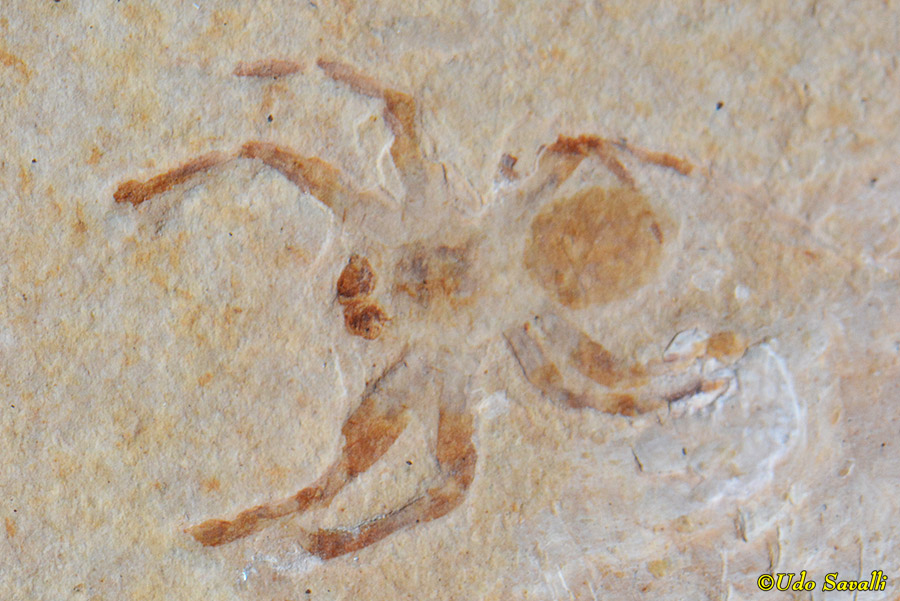
|
|
|
Both halves of a Curculioides sp. fossil in a split open concretion.
Taxonomy: Subphylum Chelicerata; Class Arachnida; Order Ricinulei
Mazon Creek, IL
Carboniferous Period
Field Museum of Natural History, Chicago IL
|
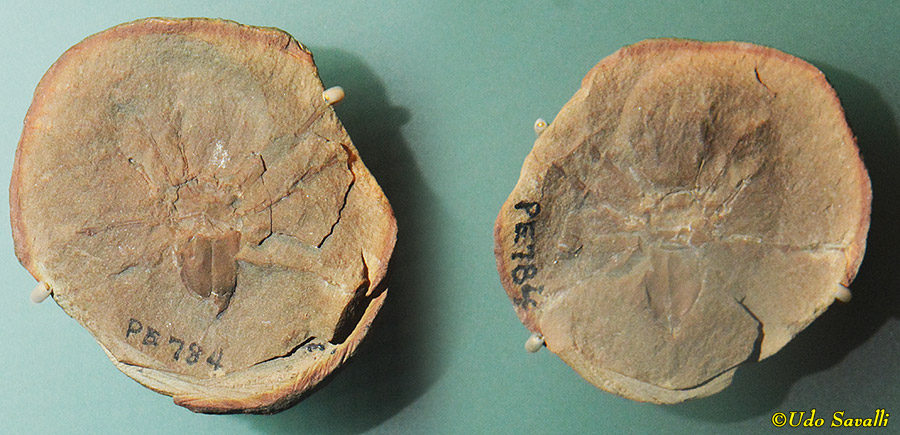
|
|
Myriopods — Centipedes & Millipedes
|
Centipedes & millipedes (and their relatives) are elongated arthropods with many pairs of legs along their entire length.
While centipedes are predators, millipedes, such as this unidentified species, mostly eat decaying plant matter.
Taxonomy: Subphylum Myriopoda; Class Diplopoda
Green River Formation, WY
Eocene Epoch, 48 Ma
Fossil Butte National Monument
|
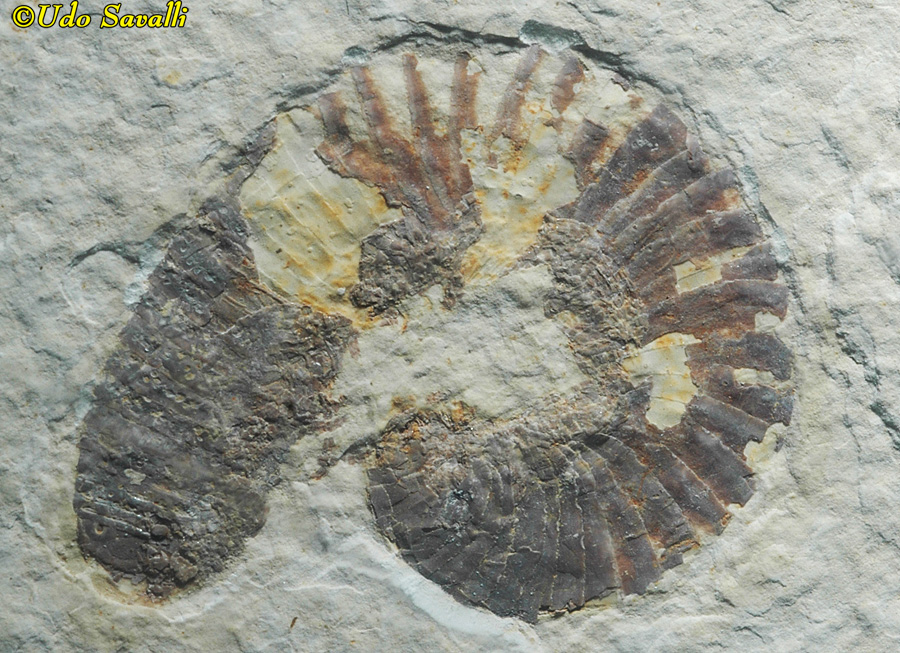
|
|
|
An unidentified millipede in a concretion.
Taxonomy: Subphylum Myriopoda; Class Diplopoda
Mazon Creek, IL
Carboniferous Period
Field Museum of Natural History, Chicago IL
|
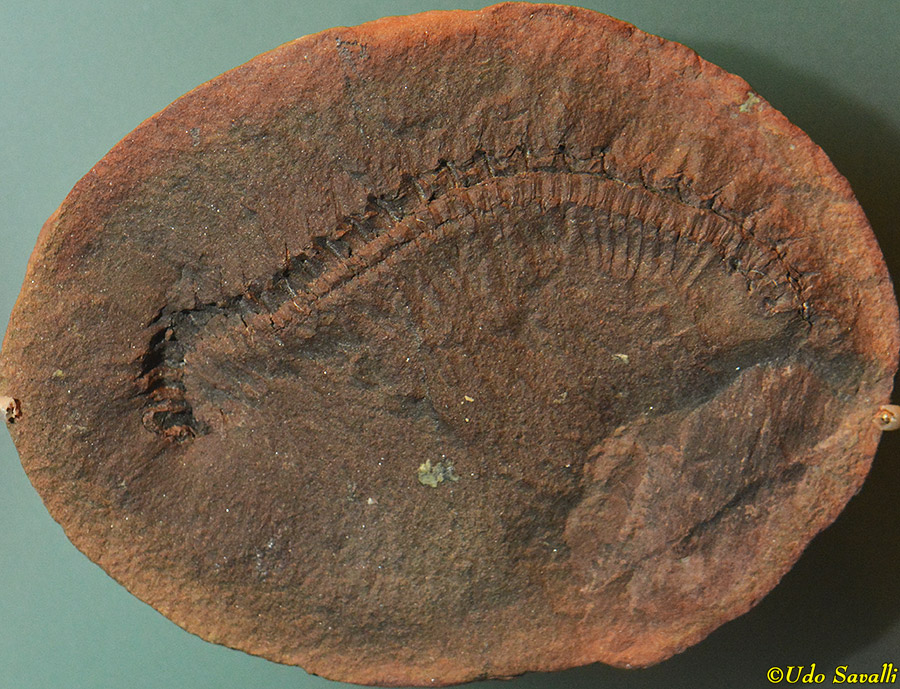
|
|
|
Arthropleura was a giant millipede, and the largest known terrestrial invertebrate, with the largest species reaching 2.5 m long. It was an herbivore like modern millipedes.
Taxonomy: Subphylum Myriopoda; Class Diplopoda
Known from North America & Europe
Carboniferous to Permian Periods, 340-280 Ma
Museum of Ancient Life, UT
|
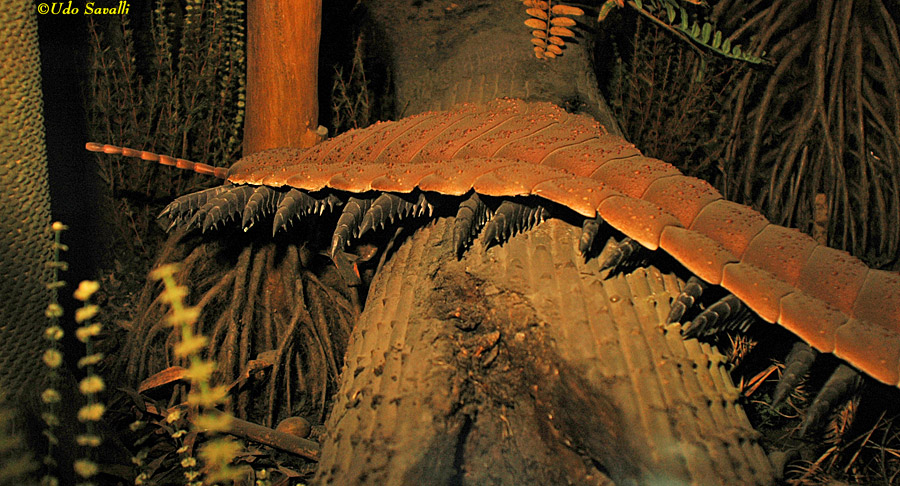
|
|
|
Another Arthropleura sp. life model.
Taxonomy: Subphylum Myriopoda; Class Diplopoda
Known from North America & Europe
Carboniferous to Permian Periods, 345-290 Ma
Field Museum of Natural History, Chicago IL
|
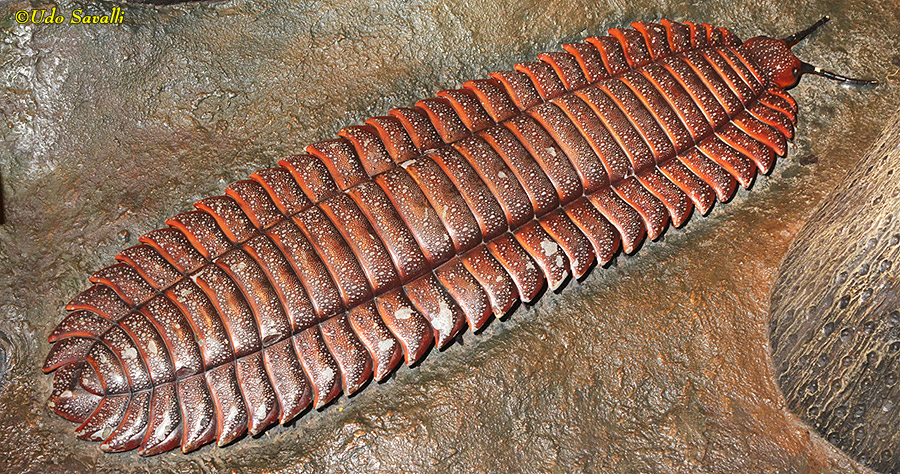
|
|
Crustaceans
|
Crustaceans are mostly aquatic invertebrates (but some, such as isopods, live on land) that include shrimp, crabs, and their relatives.
This prehistoric lobster, Paleonephrops browni, is similar to modern species.
Taxonomy: Subphylum Crustacea; Class Malacostraca; Order Decapoda
Bearpaw Shale, Montana
Late Cretaceous, Maastrichtian Stage
Black Hills Institute Museum, South Dakota
|
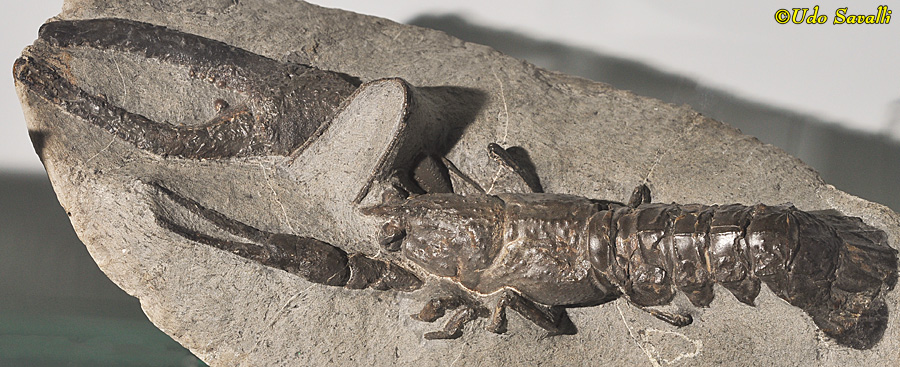
|
|
|
A crab, Avitelmessus grapsoideus.
Taxonomy: Subphylum Crustacea; Class Malacostraca; Order Decapoda
Ripley Formation, MS
Late Cretaceous Period, 70 Ma
Denver Museum of Science & Nature
|
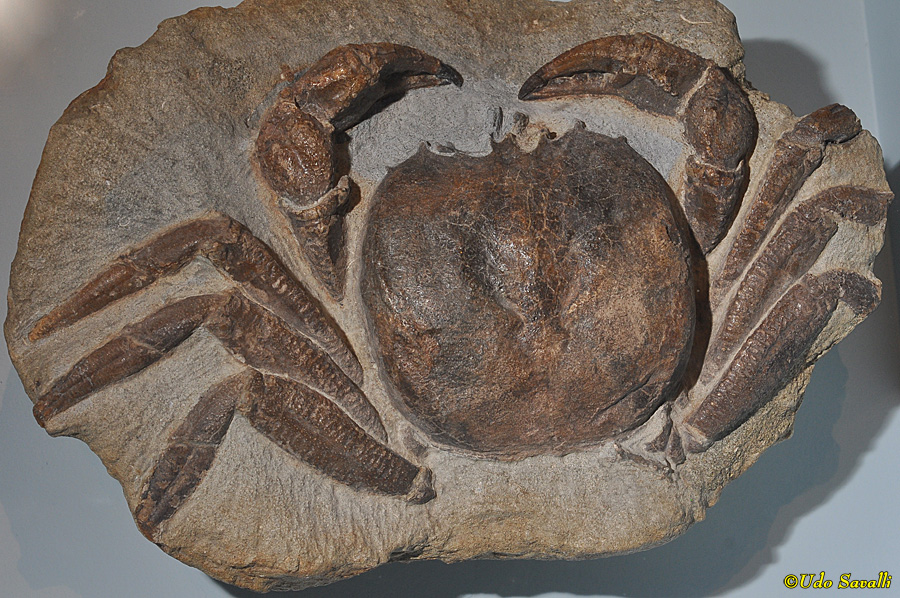
|
|
|
A shrimp, Aeger tipularius.
Taxonomy: Subphylum Crustacea; Class Malacostraca; Order Decapoda
Solnhofen Limestone, Bayern, Germany
Late Jurassic, Kimmeridgian Stage
Black Hills Institute Museum, South Dakota
|
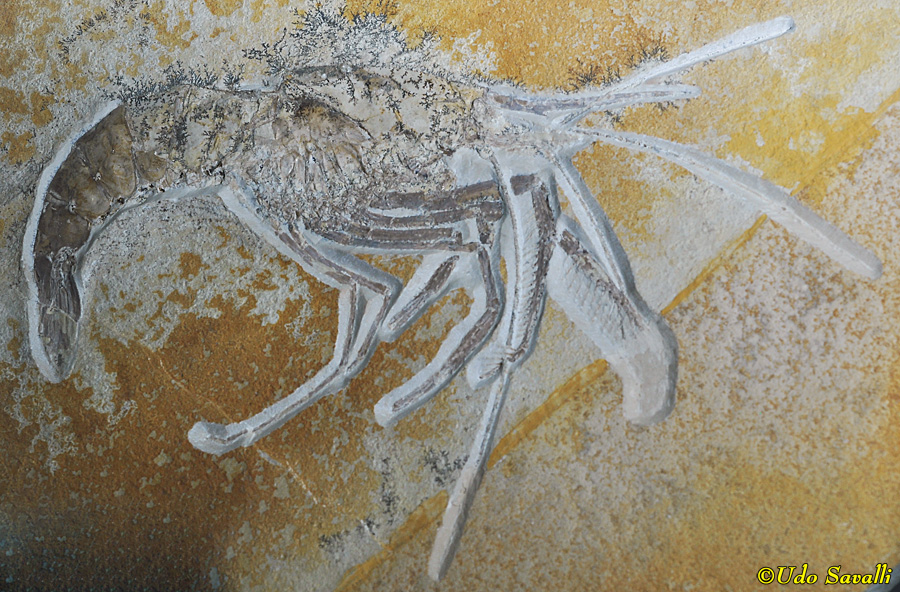
|
|
|
Eryon artiformis "lobster".
Taxonomy: Subphylum Crustacea; Class Malacostraca; Order Decapoda
Solnhofen Limestone, Bayern, Germany
Late Jurassic, Kimmeridgian Stage
Black Hills Institute Museum, South Dakota
|
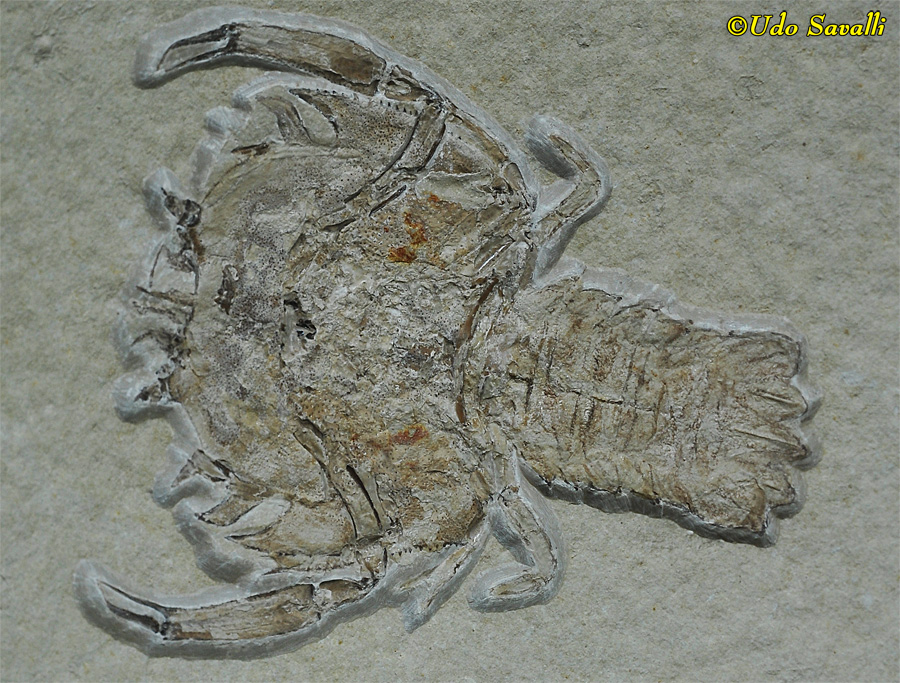
|
|
|
Procambarus primaevus crayfish fossil.
Taxonomy: Subphylum Crustacea; Class Malacostraca; Order Decapoda
Fossil Lake, Wyoming
Paleogene Period, Eocene Epoch, 50 Ma
Field Museum of Natural History, Chicago IL
|
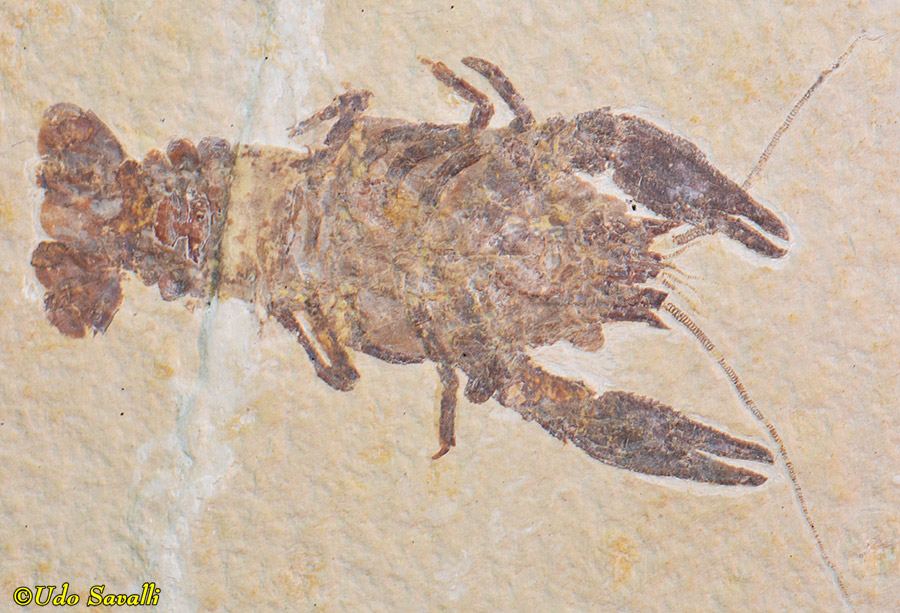
|
|
|
This Aenigmacaris cornigerum is probably related to the modern mantis shrimps (Stromatopoda).
Taxonomy: Subphylum Crustacea; Class Malacostraca; Order Aeschronectida†
Central Montana
Carboniferous Period, 320 Ma
Museum of the Rockies, Montana
|
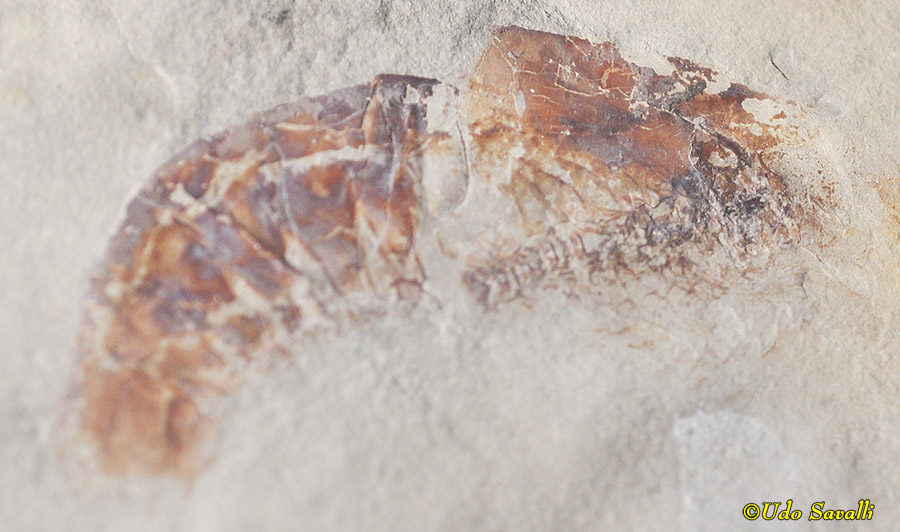
|
|
|
Pseudoarctolepis sp. is a phyllocarid, a group of simple filter-feeding crustaceans with a shell-like carapace.
Taxonomy: Subphylum Crustacea; Class Malacostraca; Subclass Phyllocarida
Wheeler Shale, Utah
Middle Cambrian Period, 507 Ma
Museum of Ancient Life, Utah
|
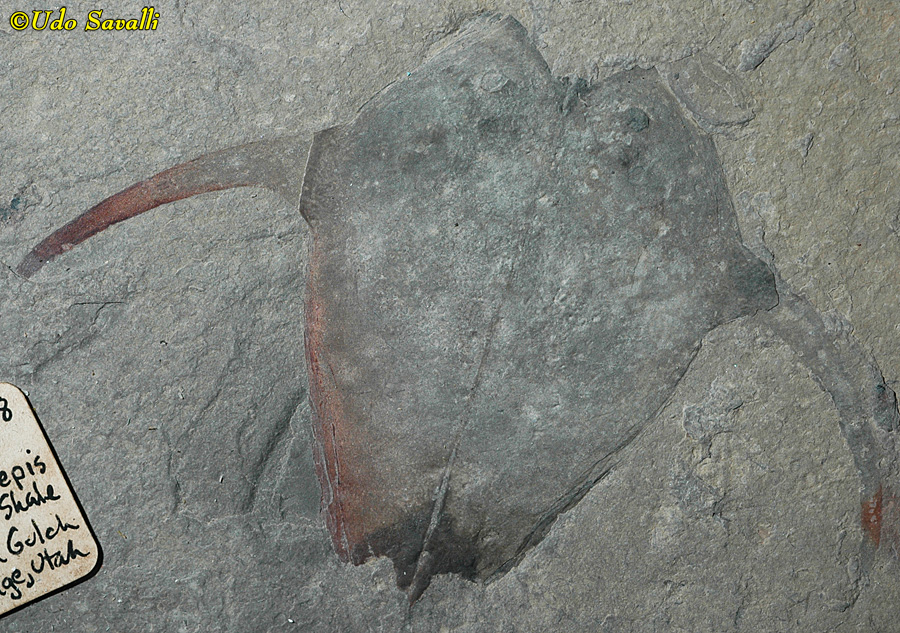
|
|
|
Dithyrocaris sp. is the largest known phyllocarid.
Taxonomy: Subphylum Crustacea; Class Malacostraca; Subclass Phyllocarida
Yukon Territory, Canada
Late Devonian Period
Tuscon Gem & Mineral Show
|
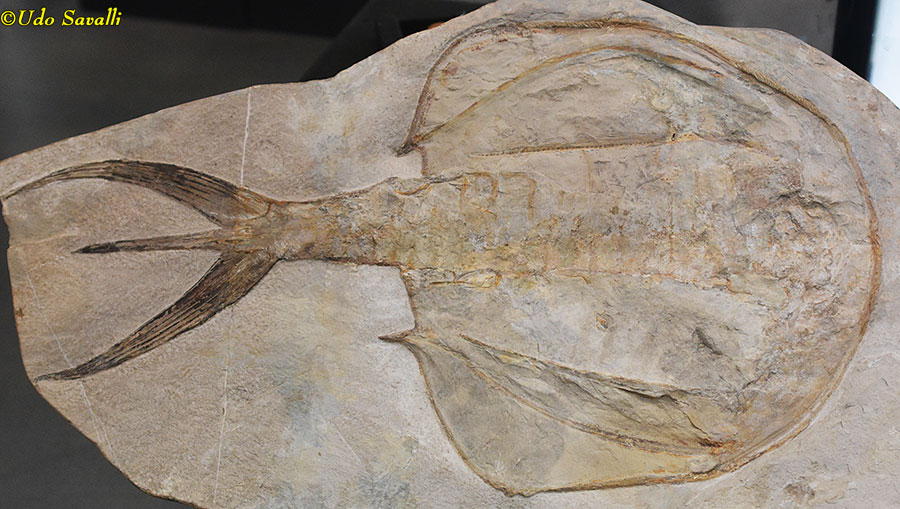
|
|
Insects
|
Insects are terrestrial arthropods that have mastered powered flight. In addition to (usually 2 pairs of) wings, they have 3 pairs of legs and a body divided into a head, thorax (with wings and legs) and an abdomen.
Dragonflies, such as this unamed Calopterygid species, are relatively primitive insects.
Taxonomy: Subphylum Hexapoda; Class Insecta; Order Odonata; Family Calopterygidae
Green River Formation, WY
Eocene Epoch, 48 Ma
Fossil Butte National Monument
|
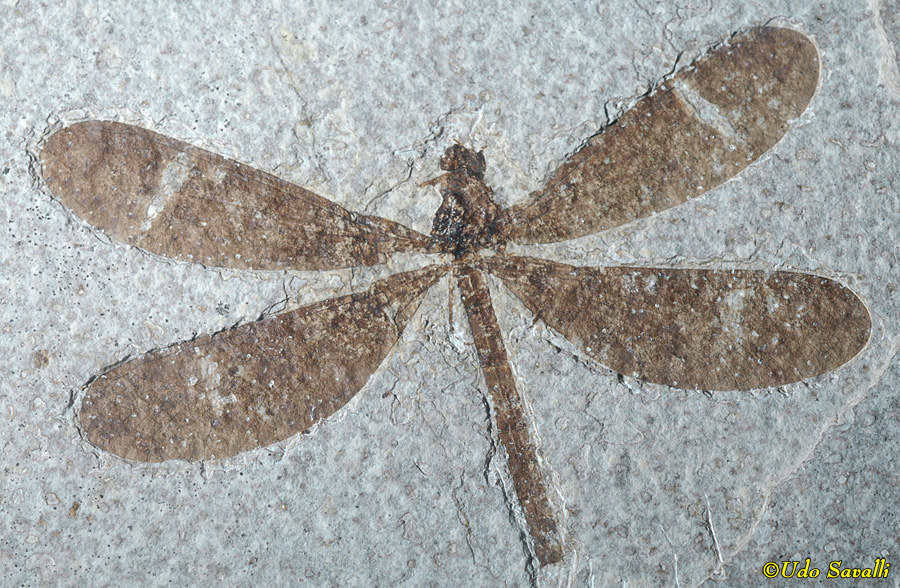
|
|
|
The dragonfly Anisophlebia helle.
Taxonomy: Subphylum Hexapoda; Class Insecta; Order Odonata; Family Isophlebiidae
Solnhofen Limestone, Bayern, Germany
Late Jurassic, Kimmeridgian Stage
Black Hills Institute Museum, South Dakota
|
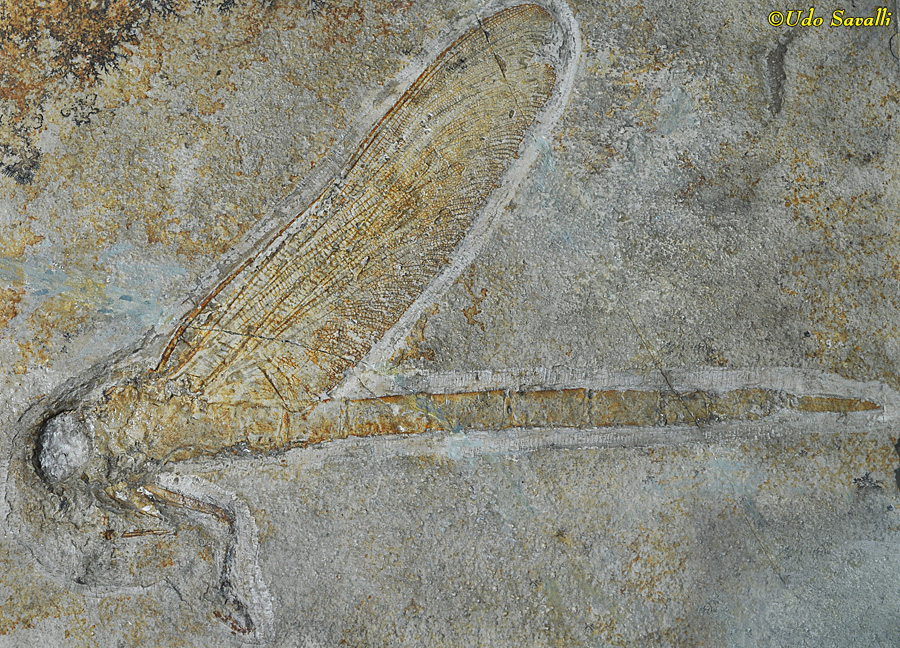
|
|
|
An unamed skimmer dragonfly.
Taxonomy: Subphylum Hexapoda; Class Insecta; Order Odonata; Family Libellulidae
Green River Formation, WY
Eocene Epoch, 48 Ma
Field Museum of Natural History, Chicago IL
|
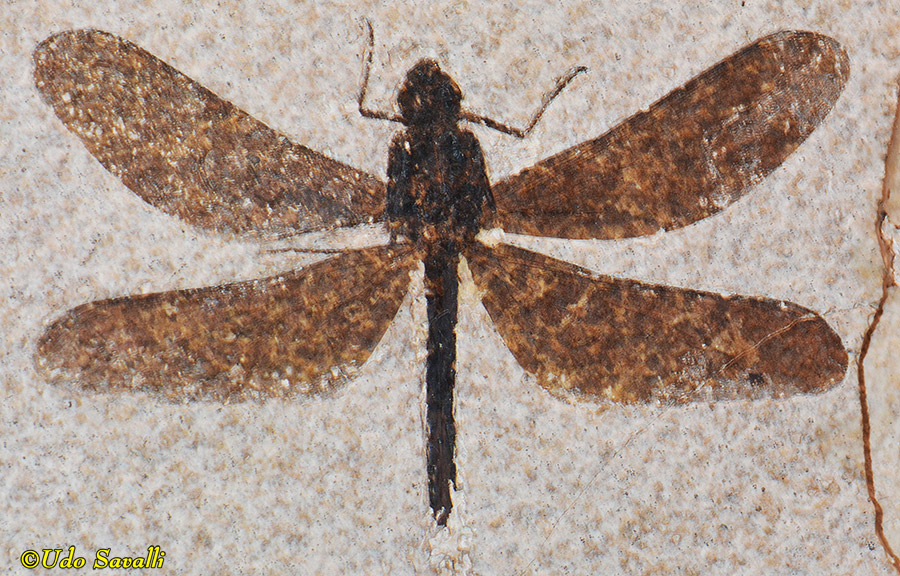
|
|
|
Aeschnogomphus sp. dragonfly
Taxonomy: Subphylum Hexapoda; Class Insecta; Order Odonata; Family Aktassiidae
Solnhofen, Germany
Late Jurassic, 156 Ma
Tuscon Gem & Mineral Show
|
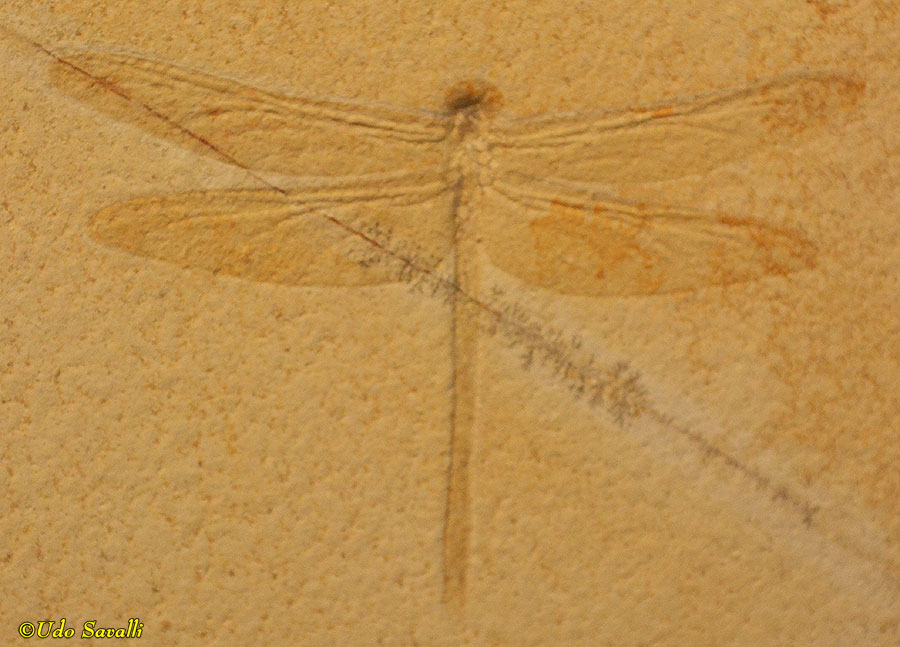
|
|
|
Damselflies, such as this unnamed pond damselfly, are related to dragonflies but hold their wings vertically instead of to the side.
Taxonomy: Subphylum Hexapoda; Class Insecta; Order Odonata; Family Libellulidae
Green River Formation, WY
Eocene Epoch, 48 Ma
Field Museum of Natural History, Chicago IL
|
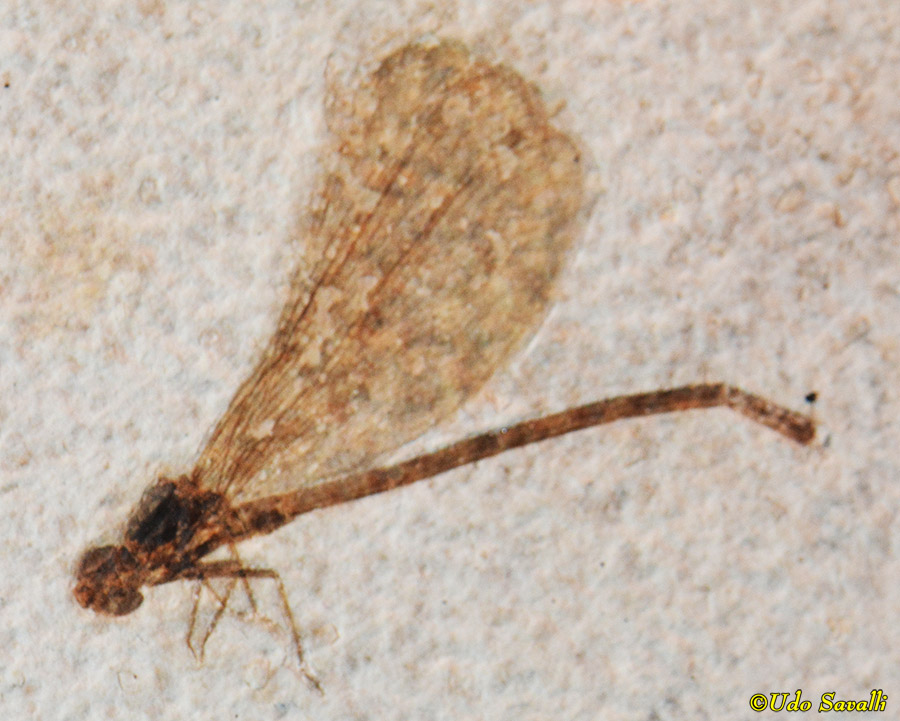
|
|
|
Cast of a fossil of Gerarus vetus, a primitive relative of grasshoppers & crickets.
Taxonomy: Subphylum Hexapoda; Class Insecta; Order Archaeorthoptera
Mazon Creek, IL
Carboniferous Period
Field Museum of Natural History, Chicago IL
|
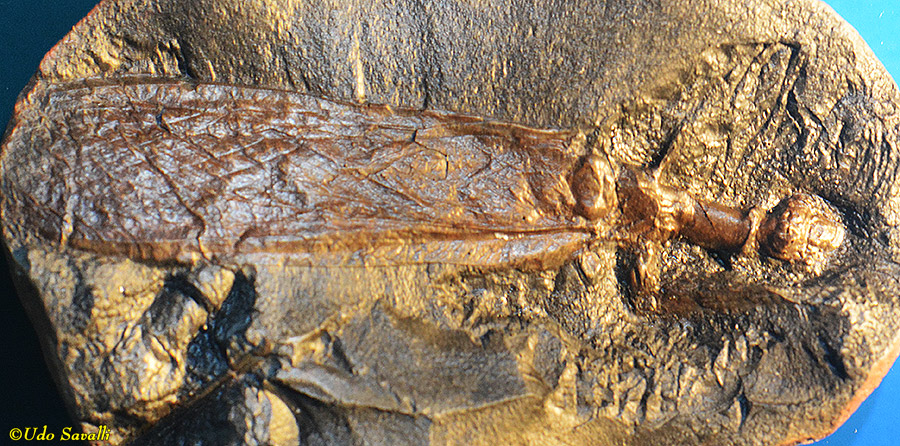
|
|
|
Chresmoda obscura is a primitive relative of grasshoppers & crickets. It probably skated on water surfaces, convergent with the water striders (below).
Taxonomy: Subphylum Hexapoda; Class Insecta; Order Archaeorthoptera
Solnhofen, Germany
Late Jurassic Period, 150 Ma
Field Museum of Natural History, Chicago IL
|
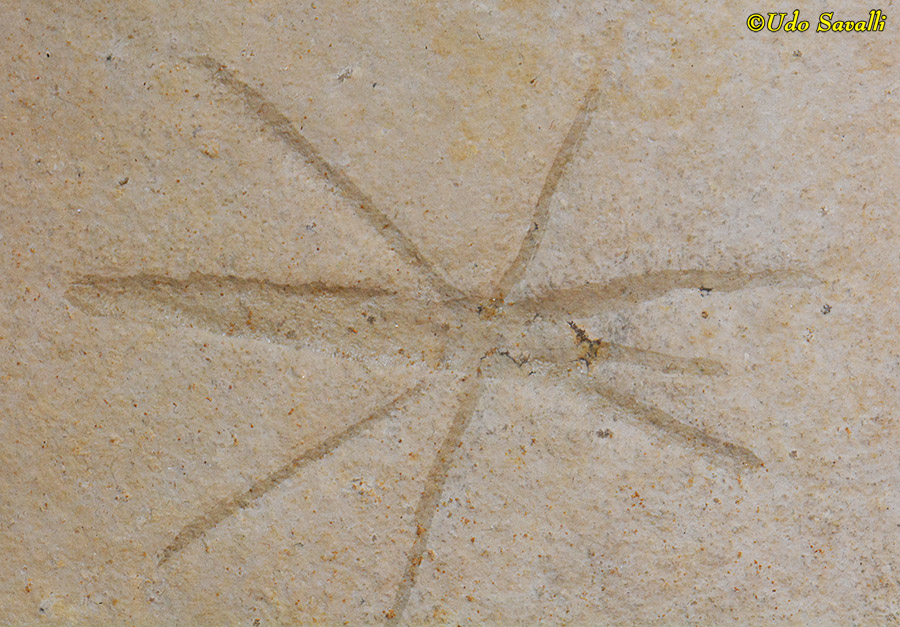
|
|
|
Water striders are insects that walk on top of ponds to capture floating prey.
Green River Formation, WY
Eocene Epoch, 48 Ma
Fossil Butte National Monument
|
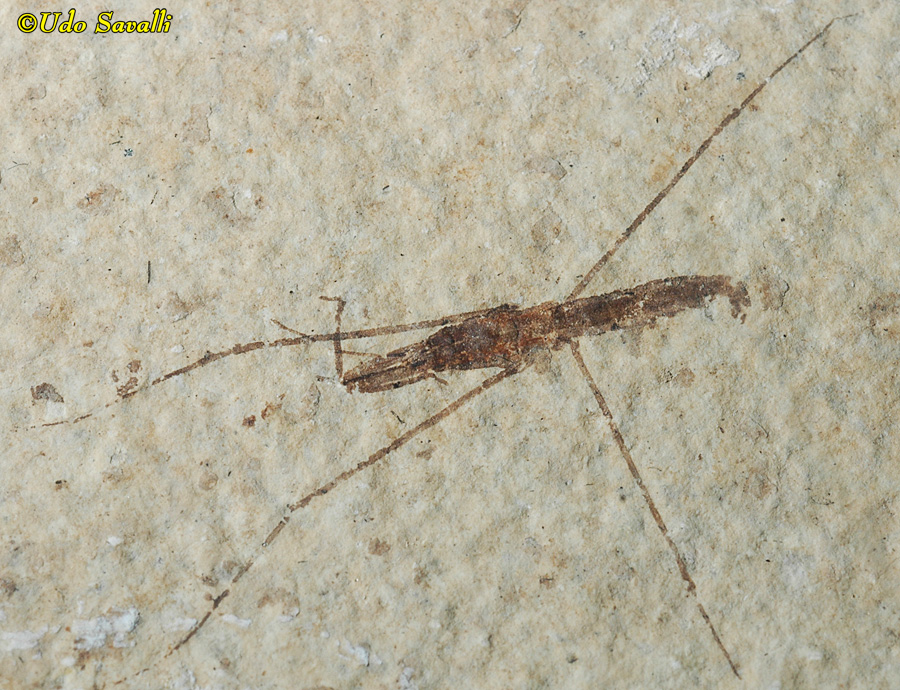
|
|
|
Fossil of an unnamed Flower Wasp.
Taxonomy: Subphylum Hexapoda; Class Insecta; Order Hymenoptera; Family Scoliidae
Fossil Lake, WY
Eocene Epoch, 48 Ma
Field Museum of Natural History, Chicago IL
|
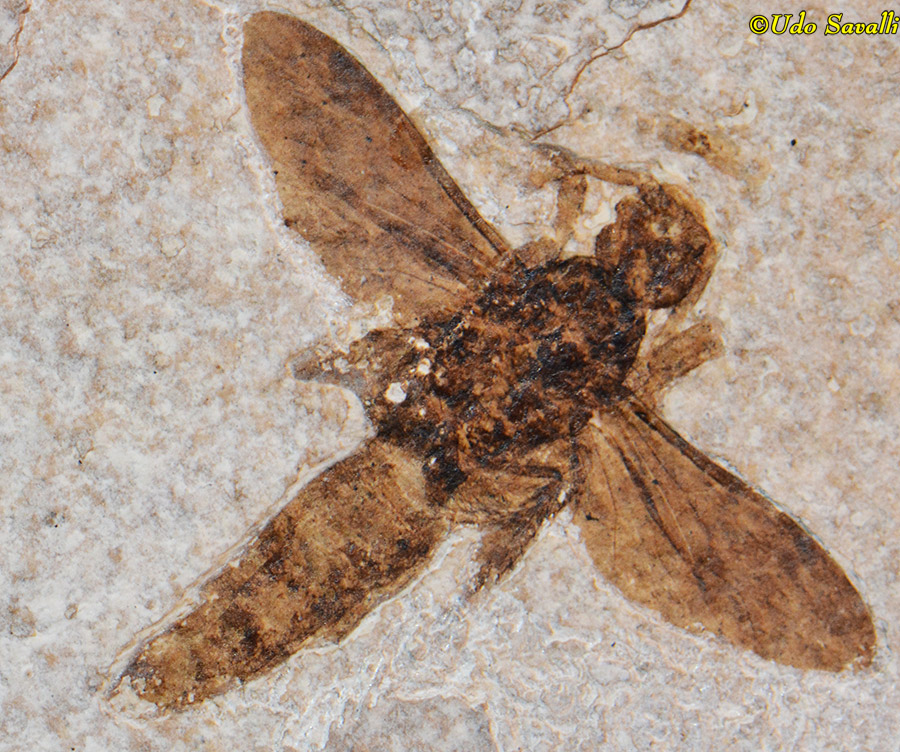
|
|
|
An unnamed Jewel Beetle.
Taxonomy: Subphylum Hexapoda; Class Insecta; Order Coleoptera; Family Buprestidae
Green River Formation, WY
Eocene Epoch, 48 Ma
Fossil Butte National Monument
|
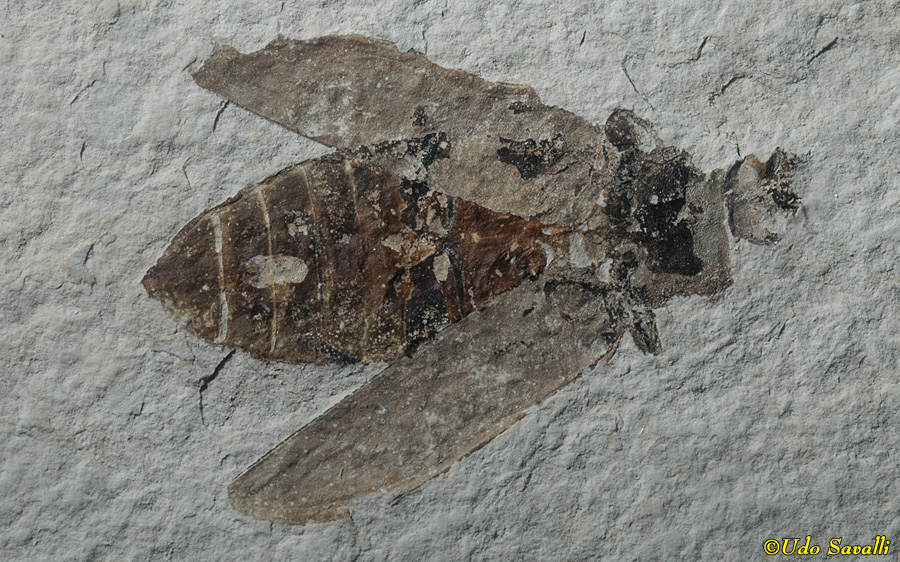
|
|
|
A robber fly.
Taxonomy: Subphylum Hexapoda; Class Insecta; Order Diptera; Family Asilidae
Florissant Formation, Colorado
Eocene Epoch, 34 Ma
Florissant Fossil Beds National Monument
|
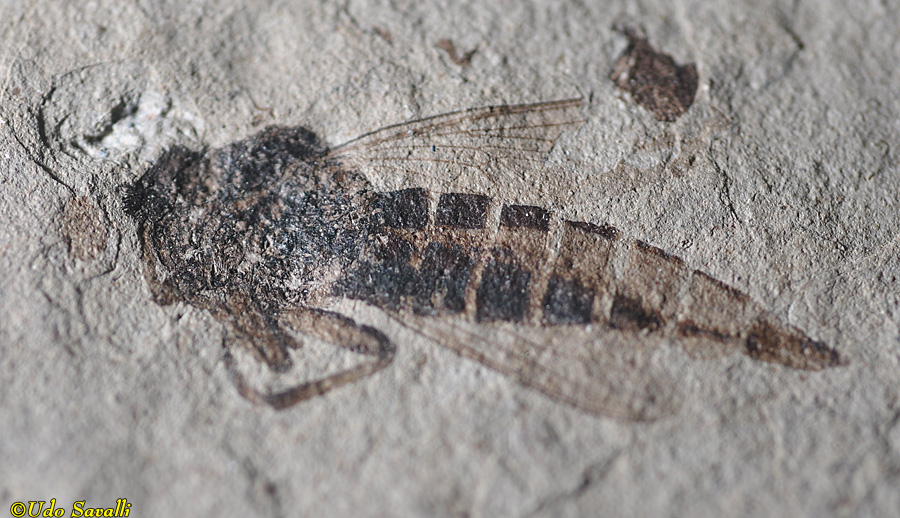
|
|
|
An unidentified insect preserving color patterns on its wings, along with some fresh-water clams.
Taxonomy: Subphylum Hexapoda; Class Insecta
Liaoning Prov., China
Early Cretaceous, Yixian Formation
Black Hills Institute Museum, South Dakota
|
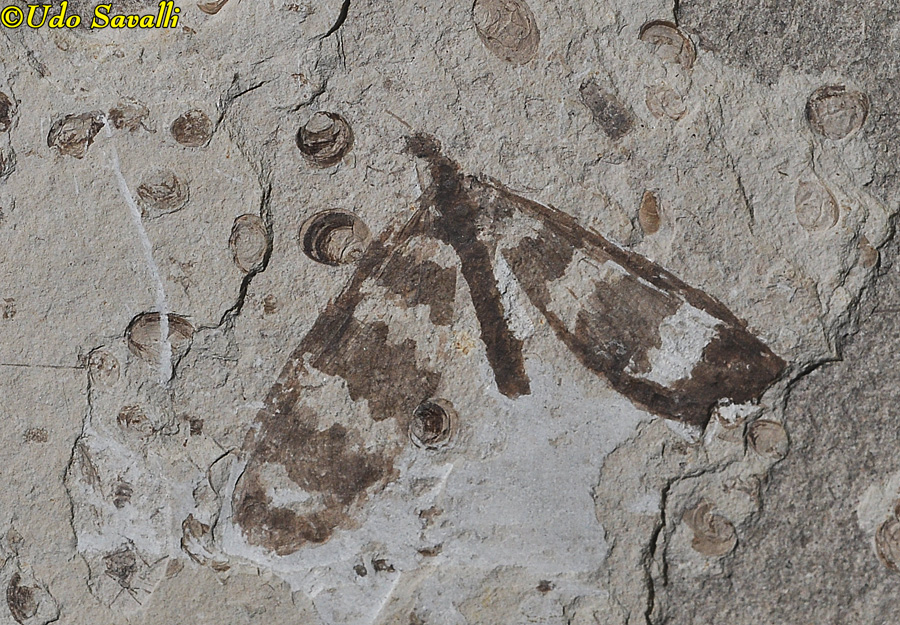
|
|
|
The nymph (aquatic juvenile stage) of an unidentified insect.
Taxonomy: Subphylum Hexapoda; Class Insecta
Liaoning Prov., China
Early Cretaceous, Yixian Formation
Black Hills Institute Museum, South Dakota
|
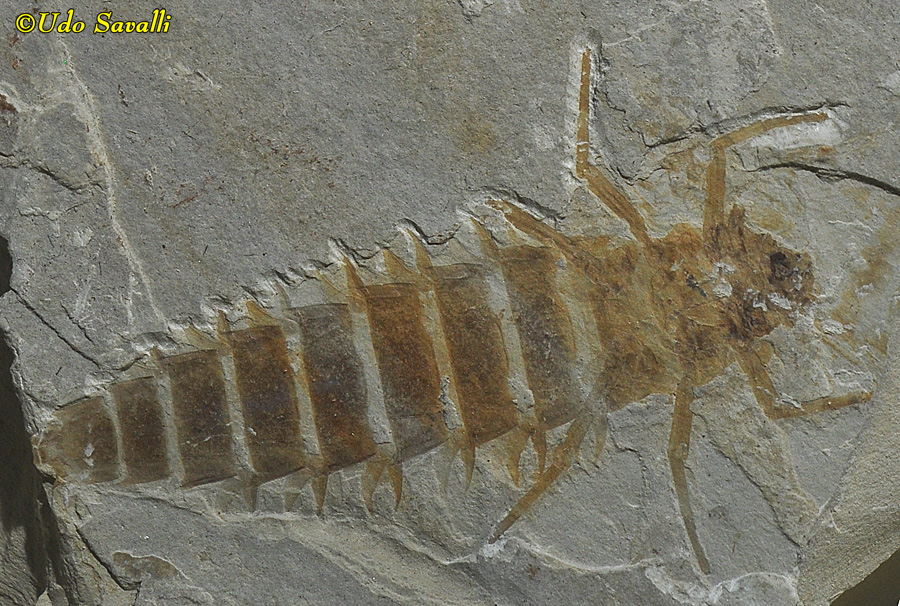
|
|
|
Meganeuropsis sp. is the largest known insect of all time with a wing span up to 71 cm across and a total legth of 43 cm. Although it resembles a giant modern dragonfly, it belonged to an extinct order of insects
Taxonomy: Subphylum Hexapoda; Class Insecta; Order Meganisoptera
Carboniferous Period, Pennsylvanian Epoch
Fernbank Museum of Natural History, Georgia
|
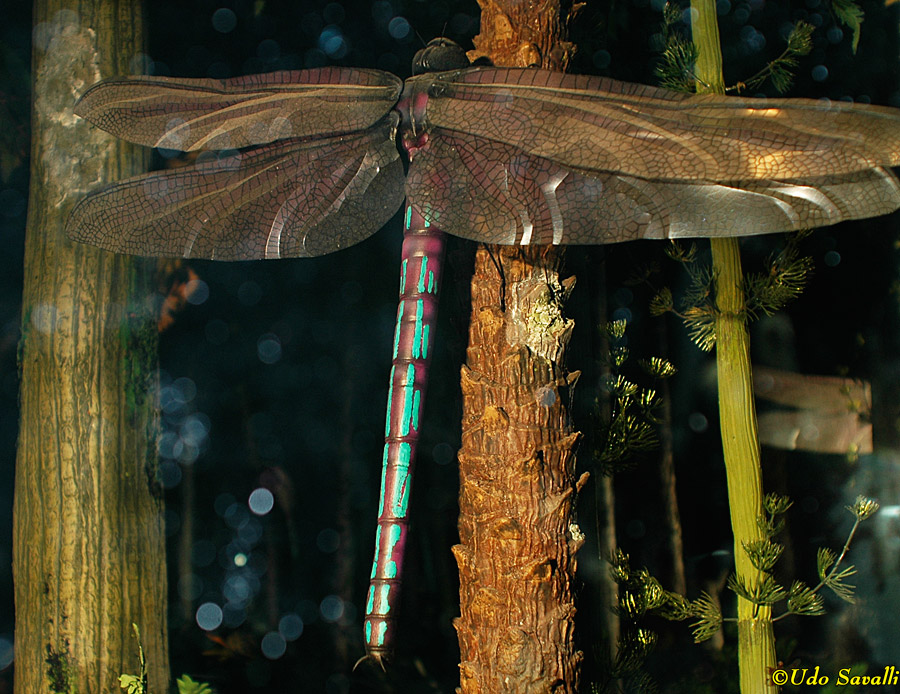
|
|
|
Meganeura sp. was another giant insect related to modern dragonflies. Its wingspan reached up to 70 cm across. The large size was probably possible due to higher oxygen levels at the time.
Taxonomy: Subphylum Hexapoda; Class Insecta; Order Meganisoptera
Carboniferous Period, Pennsylvanian Epoch, 295 Ma; Kansas
Black Hills Institute Museum, South Dakota
|
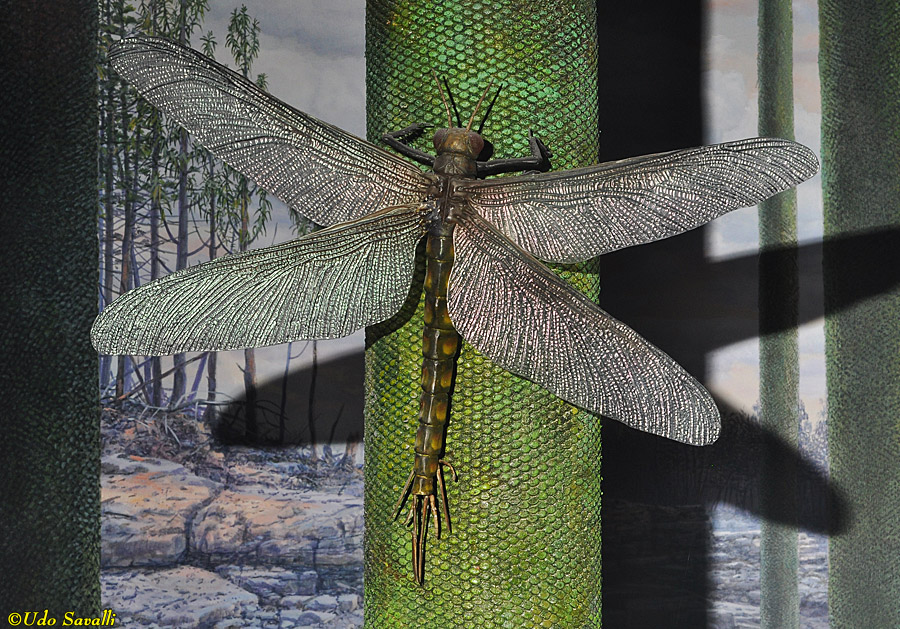
|
|
|





































